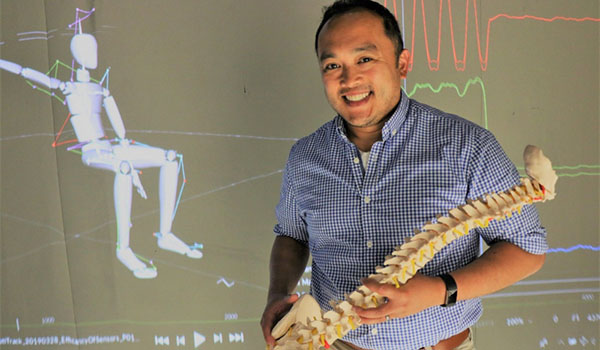
The Spine Health Improvement Program (SHIP) has several initiatives to understand and develop strategies to reduce LBP and NP among aircrew. These initiatives target causal mechanisms of injury, employ a ‘systems-perspective’ philosophy (interaction between physical loads, psychosocial/organizational factors, and individual differences), while developing approaches to streamline measurements in the field and track return-to-duty status. Dr. Peter Le, biomedical engineer and program lead for SHIP, is leading the effort in response to the National Defense Authorization Act (NDAA FY17), Sec. 750, a request to study the health of rotary-wing and tilt-rotor pilots and Joint Concept for Health Services (2015), required capability #5: medical mitigation of the environment. SHIP targets both prevention and return-to-duty, through quantifiable, biomechanical/physiological measures. These include measures of movement, muscle activity, force production, fluctuations in heart rate, and changes in muscle oxygenation, while integrating task performance as a factor to understand the mind-body interaction. These data allow us to explore possible links between biomechanical changes and human performance. While these measures may provide insight between testing conditions, the key lies within the interpretation of the measures to explore the causal pathways of injury.

Dr. Peter Le, biomechanical engineer, leads research efforts to improve spine health in military aviators as a part of Naval Medical Research Unit Dayton’s (NAMRU-Dayton) Spine Health Improvement Program lab (SHIP) housed in the Naval Aerospace Medical Research Laboratory at NAMRU-Dayton. Through basic and applied research targeting the mitigation of low back and neck disorders, research aims to address prevention and rehabilitation through a variety of methods. / Photo By Megan Mudersbach
Current funded efforts target three areas: 1) causal pathways of LBP and NP during prolonged seating (i.e., visual stressors, individual differences/cognitive workload and biomechanical effects), 2) development of analytical methods to quantitatively measure biomechanical functional status in the field, and 3) evaluation/validation of fielded motion tracking analytics systems. In addition to the target areas, the laboratory capabilities are designed with the intent to enhance collaborations and support multiple research groups needing quantitative biomechanics/ ergonomics assessments. These currently include 1) assessments of industrial exoskeletons (USAF 711th HPW) and 2) movement differences from body-mounted sensors and equipment (Gallo and Warner).
Overall, the SHIP lab is developing capabilities to assess causal pathways for LBP/NP, design methods to assess those pathways, and evaluate currently fielded systems/interventions. In essence, the SHIP philosophy to reduce LBP and NP among our aircrew is to be Intervention-Oriented, Mechanism-Driven










